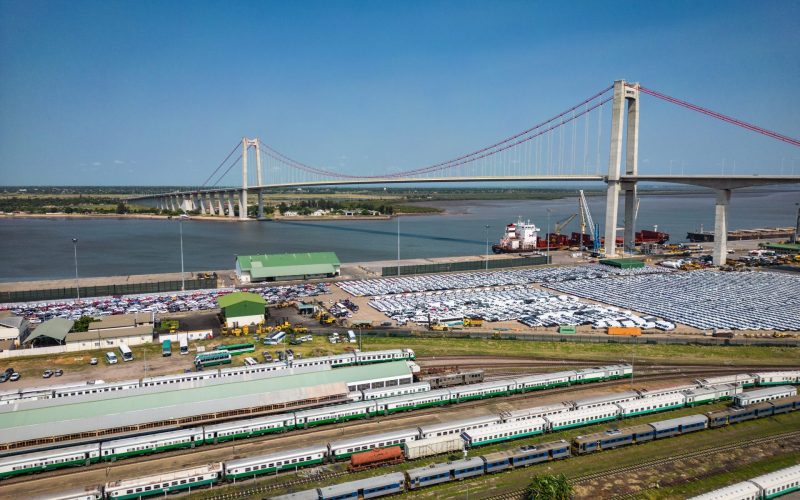This follows an earlier SAIIA study on NTBs the Beit Bridge border post.
Event materials:
Press coverage:
- “State ‘cash cows’ hamper growth” (Business Day, 22 November 2007)
In late 2006 SAIIA conducted an analysis of NTBs through a pilot-study of South Africa-Zimbabwe trade via the Beit Bridge border post – the busiest border in Southern Africa.· Findings were discussed at a workshop hosted by BUSA in August, pursuant to which the final paper will shortly be released.· That study revealed the difficulty of measuring the cost of NTBs to economies, opting instead to catalog NTBs for the four major product groups traded bilaterally.
This methodology revealed a host of NTBs, including some not traditionally thought of as NTBs.· ‘Conventional’ NTBs are generally associated with border procedures and regulations, including inter alia: customs, health, immigration, security, and technical standards.· Our study revealed that if the definition of NTB is broadened to include “trade policy barriers” (e.g. exchange controls) then a new world of regulatory obstacles to the conduct of trade is opened up.
Subsequently SAIIA initiated a follow-up study, centered on the implications of NTBs for South African companies’ supply chains.· This analysis draws on the “supplychainforesight” study by Barloworld Logistics[2], which established that major South African corporations are lagging behind in both their understanding of supply-chain management in general and consequently management of their own supply chains.· This has substantial implications for their competitiveness in a fast-moving global economy.· Our particular interest is in highlighting the impact that NTBs have on supply-chains, as opposed to individual companies, in order to reinforce the importance of systemic thinking as the basis for competing internationally.
Within this transport and logistics are particular focus areas, for three reasons.· First the South African government’s Accelerated and Shared Growth Initiative for South Africa correctly prioritizes developing the country’s logistics system, towards which end billions of Rand’s have been earmarked for expenditure.· Second, it is clear that notwithstanding the National Department of Transport’s recently released “Vision” document[3], many problems remain both in terms of its formulation and implementation. Third, during our workshop on the Zimbabwe NTBs study this emerged as a key theme.
The study to be presented focuses on supply-chains oriented around Durban-Botswana trade; particularly the corridor through Kopfontein border post running through to Gaborone.· The rationale for this route is as follows:
- This border carries the most traffic to Botswana and its primary city, Gabarone.
- Recent evidence indicates that whilst 38% of north bound traffic deviates from Beit Bridge to Groblers Bridge, the comparative vehicle tonnages south bound have dropped by nearly 60% due possibly to the overload controls imposed on this corridor in 2005 near the South African border. The Zambian traffic, aiming to avoid overload detection, may be diverting through Kopfontein, and the study will determine whether this assumption is valid or whether there are other considerations at play here.
- Whilst studies have been done on the Trans Kalahari Borders of Skilpadshek and Ramatlabama, with Groblers Bridge also getting attention on the Zambian/Malawi/DRC route deviations from Beit Bridge, no studies have been done on Kopfontein. And yet, this is the biggest volume border (16% versus 11% for the largest of the TKC borders, Skilpadshek, and Ramatlabama at 2%) for Botswana.
The following broad questions guided the research:
- What are companies concerned sourcing from the region that could be amenable to cost reductions and greater efficiencies if NTBs were ameliorated?· The focus is broader than purely bilateral (i.e. Botswana-SA) as South Africa sources other commodities from the region that traverse Botswana.
- How important are those inputs when measured against their overall supply-chain effort, and as inputs into broader supply-chains (i.e. company’s they might do business with using the original input in some form)?
- What do they export into the region that could be delivered more efficiently and cheaply?
- What are the obstacles, both regulatory and logistic, that are encountered en route between Durban and Botswana, and can these be costed?
- The study is available at https://saiia.org.za/modules.php?op=modload&name=News&file=article&sid=1102.
- Barloworld Logistics (2006) supplychainforesight survey.
- Department of Transport (2005) National Freight Logistics Strategy.








